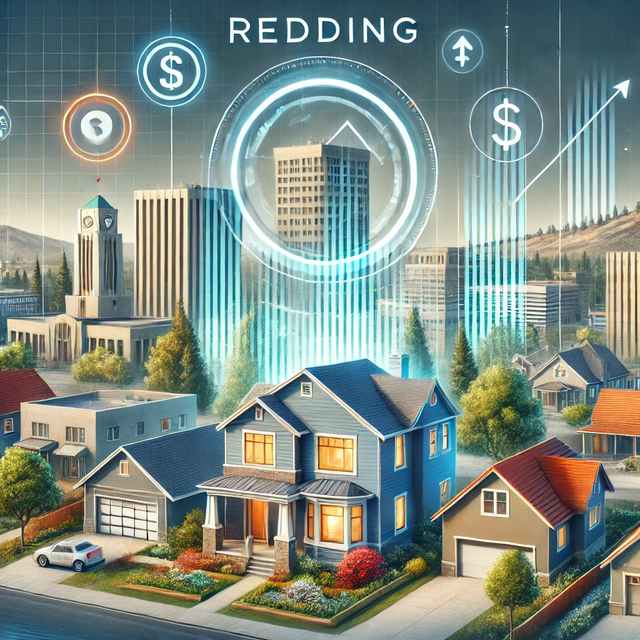The Future of Property: Trends and Opportunities to Watch
As the property landscape develops, it ends up being significantly important to comprehend the emerging patterns and opportunities that will specify the industry in the coming years. Technical developments are reshaping transactional procedures, while an expanding concentrate on sustainability shows changing customer top priorities. In addition, demographic shifts and the rise of remote job are affecting housing choices, especially in rural areas. With these characteristics at play, a better evaluation of the adjustments and approaches required for success reveals appealing opportunities that can reshape investment approaches and market actions.
Technological Advancements in Real Estate
In recent years, the actual estate market has welcomed a wave of technological developments that are transforming conventional practices. One of the most significant developments is the surge of big data analytics, which permits actual estate professionals to assess market fads, anticipate residential or commercial property values, and determine investment opportunities with unmatched precision.
In addition, digital fact (VIRTUAL REALITY) and increased fact (AR) technologies are changing home marketing by providing immersive experiences for prospective buyers and occupants. These devices permit customers to conduct virtual tours of buildings, thus improving the search process and boosting client involvement. Furthermore, blockchain innovation is gaining traction as a means to secure deals and preserve transparent records, consequently lessening fraud and speeding up the closing process.
Smart home innovations are likewise coming to be progressively widespread, making it possible for house owners to monitor and control their buildings remotely (Real Estate Lockhart). Collectively, these technological innovations are reshaping the landscape of property, fostering an extra reliable, clear, and customer-centric market
Demand for Lasting Properties
As consumers significantly prioritize ecological obligation, the need for sustainable residential properties has actually surged in the property market. This change reflects a more comprehensive societal fad toward sustainability, with investors and buyers looking for residential properties that lessen environmental impact while optimizing power efficiency. Functions such as photovoltaic panels, energy-efficient devices, and sustainable structure materials are currently considered as crucial as opposed to optional.

Additionally, the increase of environment-friendly areas, which prioritize walkability and accessibility to public transport, further stresses this pattern. These growths interest ecologically conscious customers and promote a healthier way of life.
As the need for sustainable residential or commercial properties remains to climb, market stakeholders must adjust to these assumptions. By welcoming ingenious methods and focusing on sustainability, the actual estate market can not just satisfy consumer need however also contribute to a much more sustainable future.
Changing Purchaser Demographics

Additionally, the aging populace is improving need for real estate. Infant boomers are seeking downsized houses that supply accessibility and low upkeep, frequently favoring urban setups with close-by amenities. This shift necessitates an emphasis on multi-generational housing options that fit varying requirements.
In addition, multiculturalism is playing an essential role in property patterns. Customers from different histories bring distinctive preferences and expectations, prompting programmers to produce inclusive settings that accommodate a wider target market. As these market changes remain to progress, genuine estate specialists should adjust their methods to attend to the demands of these diverse customers. Recognizing these transforming demographics will certainly be critical in recognizing arising possibilities and crafting customized advertising and marketing methods that resonate with the diverse requirements these days's market.
Rise of Remote Work Influence
Progressively, browse around this site the increase of remote work is transforming the property landscape, motivating significant shifts in buyer choices and location choices. As staff members enjoy the versatility of working from home, several are reassessing their domestic demands, leading to a surge sought after for buildings in rural and rural areas. This pattern is largely driven by the need for more spacious living atmospheres that can suit home workplaces and a far better high quality of life.
Additionally, urban centers, as soon as the prime focus for purchasers, are observing a steady decrease sought after as people prioritize affordability and access to nature. Real estate developers and financiers are changing their emphasis toward properties that supply home workplace areas, outdoor services, and distance to vital solutions.
This advancing landscape necessitates a reevaluation of traditional market techniques. Realty specialists should adjust to the changing preferences of buyers, stressing the value of way of living factors in their advertising and marketing approaches. Furthermore, builders are increasingly focusing on adaptable floor strategies that accommodate the twin needs of living and working, ensuring that they continue to be competitive in a rapidly altering market. The ramifications of remote service realty are extensive, shaping future trends and chances.
Financial Investment Opportunities in Emerging Markets
Investment chances in arising markets are continually attracting attention from actual estate capitalists looking for diversification and growth possibility. These markets, identified by fast financial development, enhancing urbanization, and a growing center class, present one-of-a-kind prospects for savvy financiers. Nations in Southeast Asia, Africa, and Latin America are seeing considerable facilities renovations and positive federal government plans, which even more enhance their appeal.
Realty sectors such as household, industrial, and logistics are experiencing enhanced need because of Continue city migration and progressing customer preferences. Especially, cities like Ho Chi Minh City, Nairobi, and Medellín are coming to be hotspots for investment as a result of their increasing economic climates and vibrant demographics.
Investors must carry out detailed market evaluations to identify crucial fads, such as changes in population characteristics and economic security, which can influence residential property values. Additionally, partnerships with neighborhood real estate firms can assist in successful access and navigating in these markets.
Nevertheless, it's vital to be mindful of potential threats, including political instability and regulative difficulties. By weighing these variables and taking on a long-term viewpoint, capitalists can properly take advantage of the rewarding linked here possibilities emerging in these developing regions.

Conclusion
In final thought, the future of genuine estate will be significantly affected by technical innovations, an expanding focus on sustainability, and evolving buyer demographics. Browsing this changing landscape will need calculated collaborations and a keen understanding of market characteristics to capitalize on the fads forming the market.
As the real estate landscape progresses, it becomes progressively essential to comprehend the emerging fads and opportunities that will define the market in the coming years. One of the most notable innovations is the surge of huge data analytics, which permits actual estate experts to examine market trends, forecast property worths, and identify financial investment chances with unmatched accuracy.As consumers significantly prioritize ecological responsibility, the demand for sustainable residential or commercial properties has actually risen in the actual estate market. The implications of remote job on real estate are profound, shaping future fads and opportunities.
Investment possibilities in emerging markets are consistently drawing in attention from real estate capitalists looking for diversity and growth capacity.